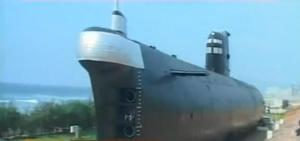
Three have many instance of crude statements bring made by the Iranian top leadership from time to time including Ayatollah Khomeini describing Israel as the “Cancerous Tumor of the Middle – East”. But things between Israel and Iran was not always that bad .After the Islamic revolution in Iran which toppled the Shah Pahlavi Dynasty relations between Iran and Israel became Sour. The revolutionary were of the view that Israel is illegally occupying the holy land. From the days when Jewish refugees took refuge in Iran east while Persia to save themselves from the wrath of Shalmanesser V and the Babylonians who invaded Israel in late800 BC to the day.
(2)
When Iran supplied Oil to Israel during the Six day war in 1948 which led to the formaticn of the state of Israel since the things have gone from good to bad and now turning worse.
Now America has been a vociferous supporters of Israel since its inception and therefore America too acknowledges Iran as a threat to Israel and world security. This may be only another reason for it to run a clandestine pogrom of its energy security and global dominance. But this has not stopped Iran from adding fuel to the fire; I have been secretly funding and giving political support to Hamas’ in the Gaza strip and Hezbollah in Lebanon; both the terrorist organizations supposedly carrying out Jihad to take out Israel.
President Obama was expected to become the new American peace broker between Israel and The Muslim world but he too has not been very effective. There have been conflicting statements being made by Mr. Barack Hussein Obama on a regular basis, On the one hand he talks about restraining Israel from inciting the wrath of the Arab world and on the others land he shakes hands with the Russians to encircle Iran with its Missile Defense Program. President Obama hopes Russia will find more reasons to go along with U.S. efforts to stop Iran from building a nuclear bomb. Russia publically opposes any Irannian effort to develop nuclear weapon but it is also against imposing new sanctions on Tehran.
(3)
Lately the Israeli leadership has got quite aggressive towards Iran’s Nuclear development program There have been repots floating in the media about prime Minister Benjamin Netanyahu planning an air raid on Iran’s Uranium Enrichment plant . A senior pentagon official said it was jus a clear message to the United States and other Countries that Israel was prepared to act militarily.
On the Israel front Obama has been Untypical with respect to past American presidents. Obama chief of staff Rahm Emanuel appears to be masterminding the effort to force Israel to tone down or better yet force Netanyahu from office’ so as to get more compliant and fearful Israeli leader into the prime – ministers office. In reality Rahm gives cover to Obama dramatic policy shift towards Israel . That new reality is that Israel is no longer an ally of the United states. It is rather an obstacle in the way of better relations with the Muslim world and the Arab nations in particular . This was the obvious after the address to the Muslim world at the Cairo University.--(please add the month i donot reacall when the speech was given)---
President Obama’s obsession to create a positive image of America among the Muslim nation could prove detrimental towards Israels Objective of dominating middle – east affairs’. But his stand on the Iran issue reassures Israel of Americans support ;maybe this is due to the strong Jewish lobby in American Politics which he cannot afford to ignore.
(4)
It is expected that Iran will have nuclear capability by the end of 2009. And with the re-election of the Iranian President Mahmud Ahmadinejad radical who is an outspoken critic of United States Foreign policy and Israel also President Ahmadinejad now boasts of renewed support of the Iranian Supreme Leader Ayatollah khameni thing are not looking any better.
And among all this Mr. Obama was surprised with the Nobel Peace Prize,A “surprised” and “deeply humbled” Mr Obama said he doubted he deserved the honour, but vowed to wield it as a “call to action” to lead a united world against its greatest challenges. It is claimed by many that Obama's wilingness to hold a unconditional dialogue with Iran is one of the important reasons for the Peace Prize. But one thing is clear from a question raised by a french newspapers editor,“Could a Nobel Peace Prize laureate decide to attack Iran?” a US-Iran war is not on the cards any time soon.
But sure enough Obama will have a tough time’ with two radical leaders at the opposing camps – But this is the kind of time he’s ben having since his election. Until then it is only hoped that president’s Obama; Netanyahu and Ahmadinejad work something out for the stabilization of the Middle – East.
